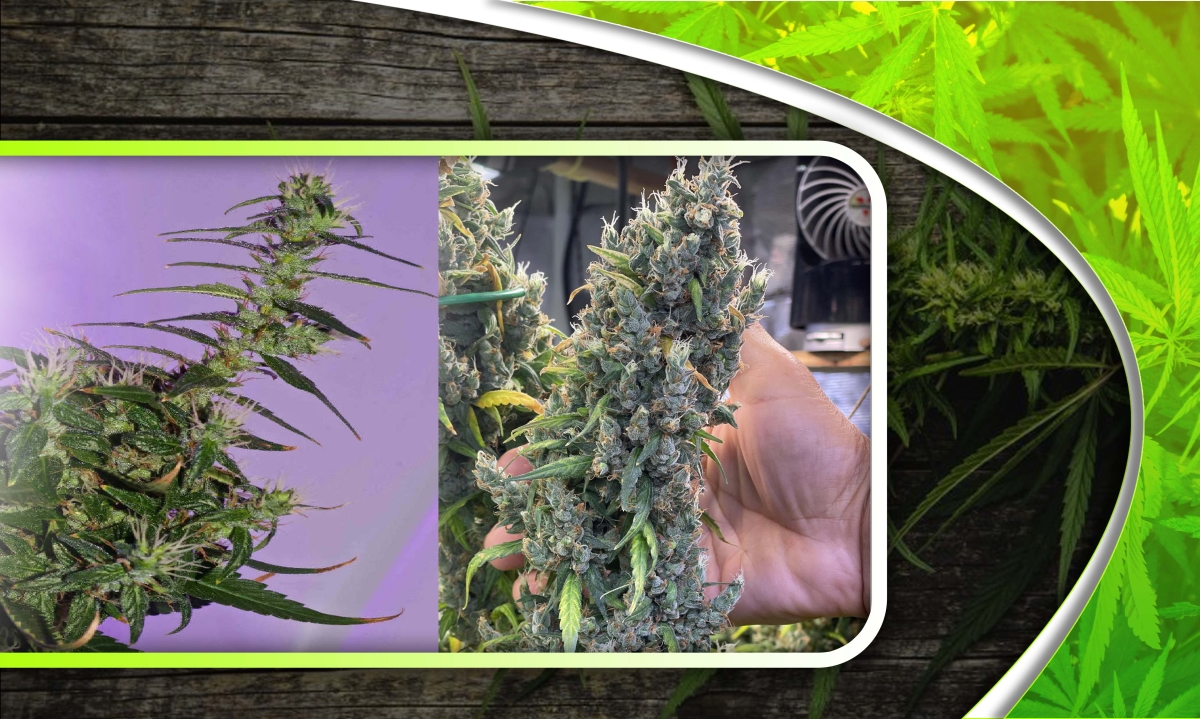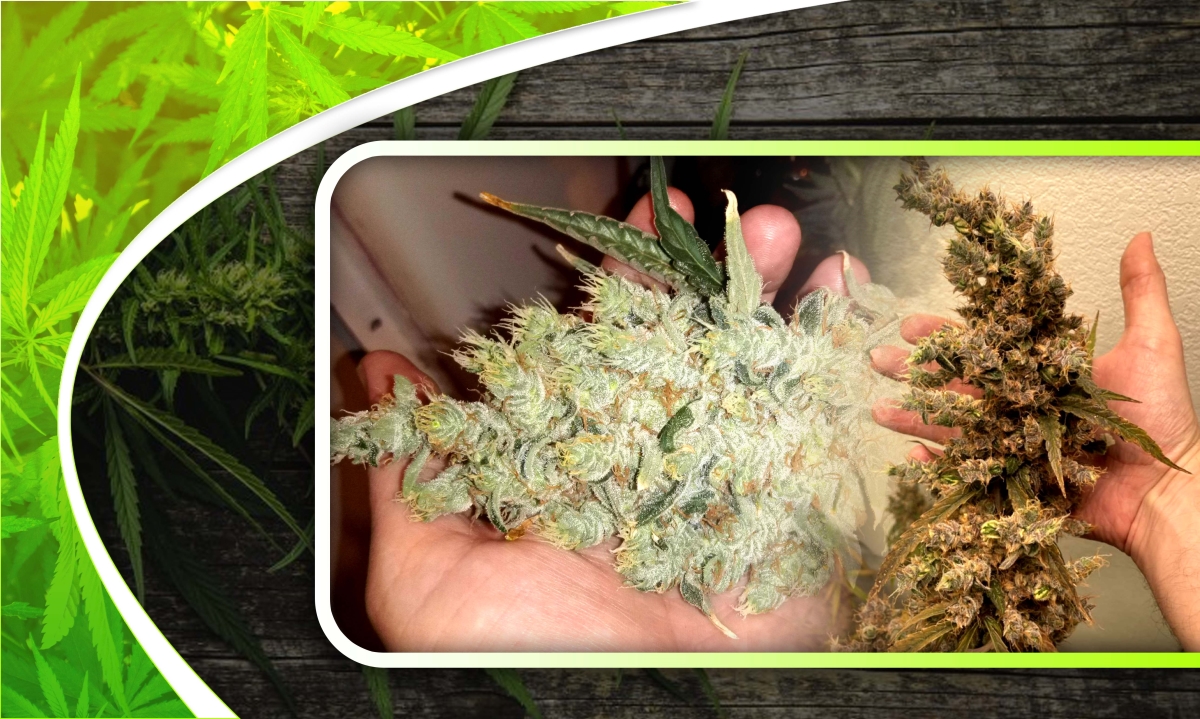An extended, spiky structure that resembles a fox’s tail develops in buds of cannabis plants known as “foxtailing.” Even while these unusual growths could seem fascinating, they might be signs of underlying problems that need to be addressed to guarantee the harvest’s quality and health. Maintaining a thriving cannabis crop requires knowing how to recognize and handle foxtails.
Table of Contents
What Are Foxtail Buds in Cannabis Cultivation?
Identifying Foxtails
Causes Foxtailing Buds
Managing Foxtail Buds
Is Foxtail Bad?
Final Thoughts
What Are Foxtail Buds in Cannabis Cultivation?
A phenomenon known as “foxtail buds” sometimes appears when cannabis plants are flowering. These buds are long, spindly structures that resemble a fox’s tail. Although visually unique, if improperly maintained, foxtailing can provide difficulties for producers and lower the harvest’s overall quality.
When specific environmental conditions or genetic characteristics lead to uneven development patterns in cannabis plants, these peculiar buds form. Foxtail buds can arise due to a variety of factors, including high temperatures, intense light, nutrient imbalances, and genetic predispositions. Furthermore, foxtailing can also be brought on by stress during the flowering phase, such as abrupt shifts in the light cycle or insufficient ventilation.
Identifying Foxtails
Foxtails are identified by their long, spike-like structure that develops from the primary buds; they are typically seen during the flowering period. Growers need to identify these foxtail formations to address any underlying issues and reduce the likelihood of yield and quality problems.
Foxtails usually present themselves as clusters of tightly packed, elongated buds extending from the central cola or branches. Although some foxtails may emerge organically in specific cannabis varieties, an abundance of foxtailing signals stress or environmental influences.
Causes Foxtailing Buds
One of the primary factors contributing to foxtailing buds is environmental stress. High temperatures, particularly during the late flowering stage, can disrupt the plant’s hormone balance and trigger abnormal bud growth. Excessive heat can accelerate metabolic processes, leading to rapid bud development and elongation. Additionally, prolonged exposure to intense light, especially in the absence of adequate airflow and ventilation, can exacerbate the problem.
Genetics also plays a significant role in foxtailing. Some cannabis strains are more prone to developing foxtails due to their genetic predisposition. These strains may exhibit traits that favor elongated bud growth, even under optimal growing conditions. While genetics alone may not cause foxtailing, they can influence the likelihood and severity of the phenomenon.
Nutrient imbalances are another common cause of foxtailing buds. Excessive or insufficient amounts of vital nutrients, especially when the plant is in bloom, can cause stress reactions and interfere with regular growth patterns. Anomalies in bud development, such as foxtailing, can be caused by imbalances in macronutrients like potassium, phosphorus, and nitrogen, as well as micronutrients like magnesium and calcium.
Furthermore, improper pruning and training techniques can contribute to foxtailing buds. A plant’s hormonal balance can be upset and stress-induced by overly vigorous pruning or canopy manipulation, which can result in uneven bud growth. Pruning and training must be done carefully to preserve and honor the plant’s natural development patterns during the cultivating phase.
Managing Foxtail Buds
Managing foxtail buds requires a proactive approach to address the underlying causes and minimize their impact on the plant’s development. Begin by optimizing environmental conditions, including maintaining stable temperatures, humidity levels, and light cycles throughout the flowering stage. Adequate airflow and ventilation are crucial for preventing heat buildup and ensuring proper air circulation around the plants.
Regular monitoring of nutrient levels and pH balance in the growing medium helps prevent nutrient deficiencies or imbalances that can contribute to foxtailing. Adjusting nutrient formulations as needed and providing essential micronutrients can promote healthy bud development and minimize stress on the plants.
When confronted with fox tail buds, growers should also consider the genetics of the strain and its propensity for fox tailing. Some cannabis varieties are more prone to foxtailing due to genetic factors, and selecting strains with stable genetics can help mitigate this issue.
To prevent or manage foxtailing buds, growers should strive to create a stable and optimized growing environment. This includes maintaining proper temperature and humidity levels, providing adequate airflow and ventilation, and ensuring consistent nutrient delivery. Choosing cannabis strains with stable genetics and avoiding excessive pruning or manipulation can also help minimize the risk of fox tailing.
Is Foxtail Bad?
While not always harmful, fox tailing in cannabis might indicate underlying problems like stress, genetics, or environmental variables that impact the quality of the buds. The density and potency of foxtail buds may be lower than that of regular buds, which could affect cannabinoid concentrations and overall production. Although foxtailing is a normal trait on some strains, producers should keep an eye out for stress indicators and take quick action when necessary. In general, foxtailing can be used as a visual indication to evaluate and adjust growing conditions to maximize plant health and harvest quality.
Final Thoughts
Foxtail buds are a common occurrence in cannabis cultivation, often resulting from environmental stressors, genetic predispositions, or a combination of both. While visually striking, foxtailing can impact yield and quality if left unaddressed. By understanding the underlying causes and implementing proactive measures to optimize growing conditions, growers can minimize the occurrence of foxtail buds and achieve healthier, higher-quality harvests.
Frequently Asked Questions
1. What is foxtailing?
Foxtailing refers to the abnormal growth of cannabis buds, characterized by elongated and clustered formations resembling a fox’s tail. It can occur due to various factors such as genetics, heat stress, or excessive light exposure. Foxtailing can affect bud quality and yield if not properly managed.
2. Can you reverse foxtailing?
Once foxtailing occurs on cannabis plants, it’s challenging to reverse completely. However, you can mitigate its effects by optimizing environmental conditions, such as controlling temperature, humidity, and light intensity. Proactive measures may prevent further development of foxtailing in future growth cycles.
3. Is Foxtailing Good or Bad?
Foxtailing in cannabis can be both good and bad. While some strains naturally exhibit foxtailing and produce desirable effects, excessive foxtailing due to stress or environmental factors can lead to lower-quality buds with reduced potency and aesthetic appeal. Monitoring and managing foxtailing is crucial for optimal yields and quality.
4. What are dried foxtail buds?
Dried foxtail buds refer to cannabis buds that have undergone abnormal elongation and clustering, resembling fox tails. This condition can result from various factors such as genetics, heat stress, or light intensity. Despite their irregular appearance, dried foxtail buds can still contain potent cannabinoids and are suitable for consumption.
5. What are the early signs of foxtailing?
Early signs of foxtailing include abnormal bud elongation, with buds appearing wispy and clustered. This can occur alongside regular bud development or become noticeable during the flowering stage. Look for elongated, fox-like tails emerging from the center of buds, indicating potential genetic or environmental factors affecting the plant.





